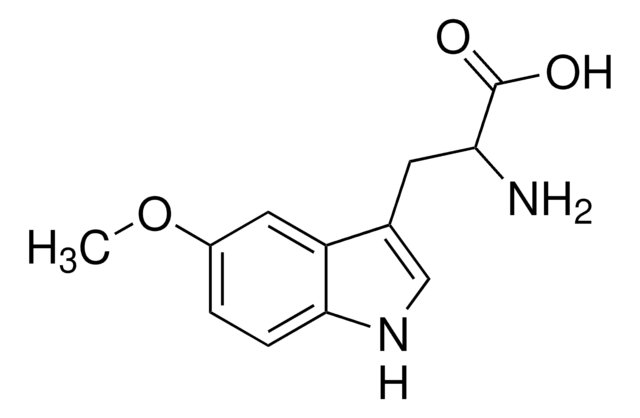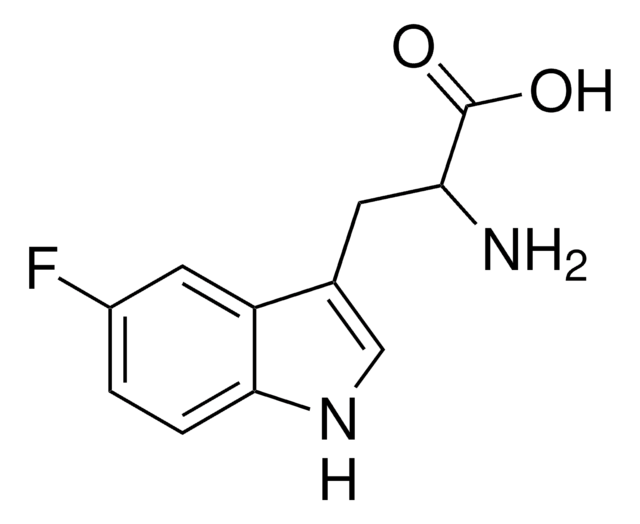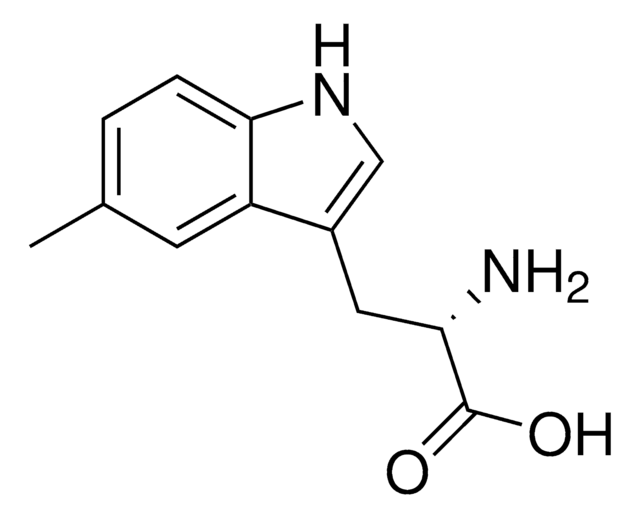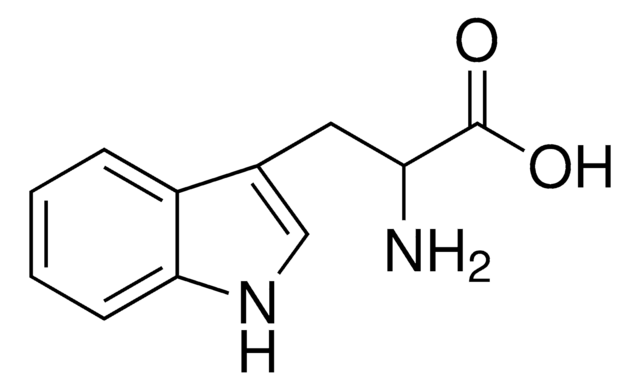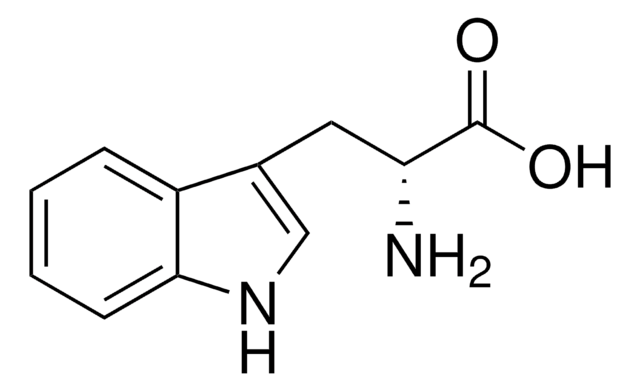All Photos(2)
About This Item
Empirical Formula (Hill Notation):
C12H14N2O2
CAS Number:
Molecular Weight:
218.25
Beilstein:
17684
EC Number:
MDL number:
UNSPSC Code:
12352209
PubChem Substance ID:
NACRES:
NA.26
Recommended Products
Product Name
6-Methyl-DL-tryptophan, crystalline
Assay
>98% (TLC)
Quality Level
form
crystalline
color
light yellow to orange
mp
290 °C
storage temp.
2-8°C
SMILES string
Cc1ccc2c(CC(N)C(O)=O)c[nH]c2c1
InChI
1S/C12H14N2O2/c1-7-2-3-9-8(5-10(13)12(15)16)6-14-11(9)4-7/h2-4,6,10,14H,5,13H2,1H3,(H,15,16)
InChI key
GDMRVYIFGPMUCG-UHFFFAOYSA-N
Looking for similar products? Visit Product Comparison Guide
Biochem/physiol Actions
6-Methyl-DL-tryptophan is a tryptophan analog.
Storage Class Code
11 - Combustible Solids
WGK
WGK 3
Flash Point(F)
Not applicable
Flash Point(C)
Not applicable
Personal Protective Equipment
dust mask type N95 (US), Eyeshields, Gloves
Choose from one of the most recent versions:
Already Own This Product?
Find documentation for the products that you have recently purchased in the Document Library.
Inge A Unsöld et al.
Microbiology (Reading, England), 151(Pt 5), 1499-1505 (2005-05-05)
A putative dimethylallyltryptophan synthase gene, fgaPT2, was identified in the genome sequence of Aspergillus fumigatus. fgaPT2 was cloned and overexpressed in Saccharomyces cerevisiae. The protein FgaPT2 was purified to near homogeneity and characterized biochemically. This enzyme was found to convert
Huixi Zou et al.
Journal of natural products, 72(1), 44-52 (2008-12-31)
This study reports that a series of tryptophan derivatives with modifications on the side chain or at the indole ring were accepted by two cyclic dipeptide prenyltransferases, CdpNPT and FtmPT1, and converted to prenylated derivatives. The structures of the enzymatic
Our team of scientists has experience in all areas of research including Life Science, Material Science, Chemical Synthesis, Chromatography, Analytical and many others.
Contact Technical Service